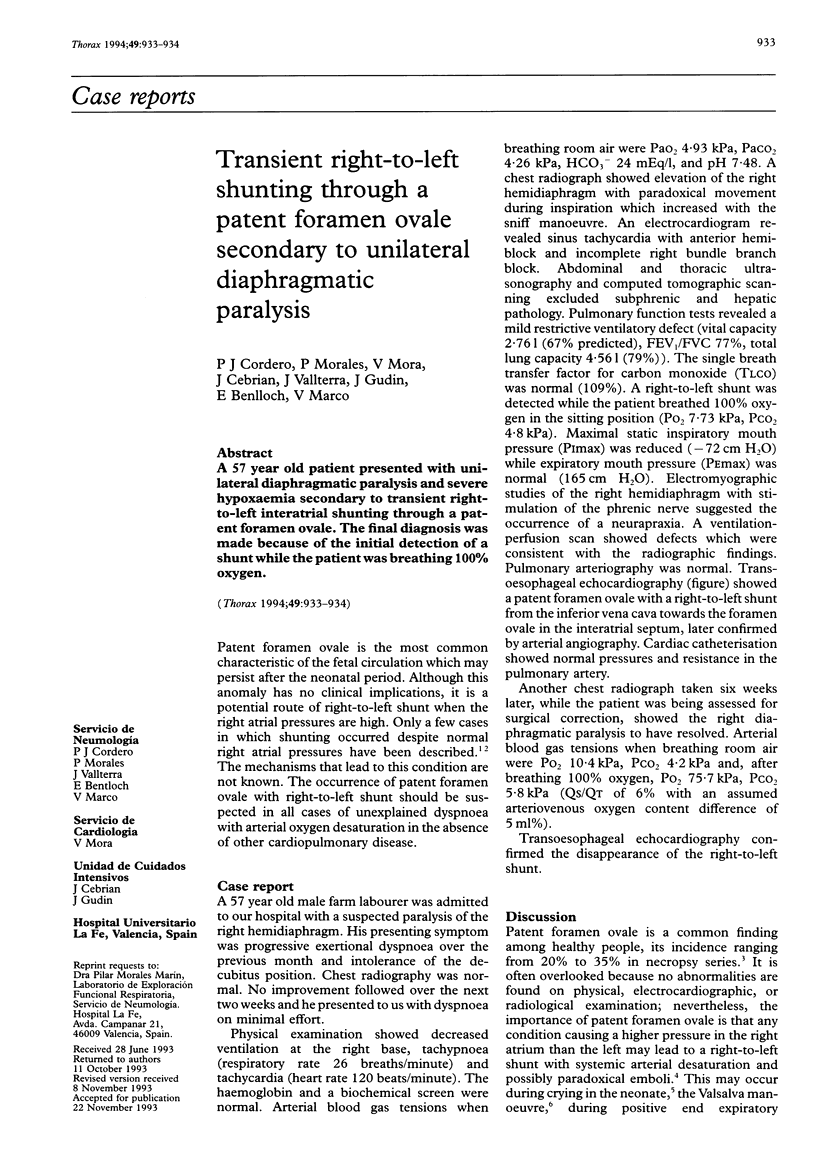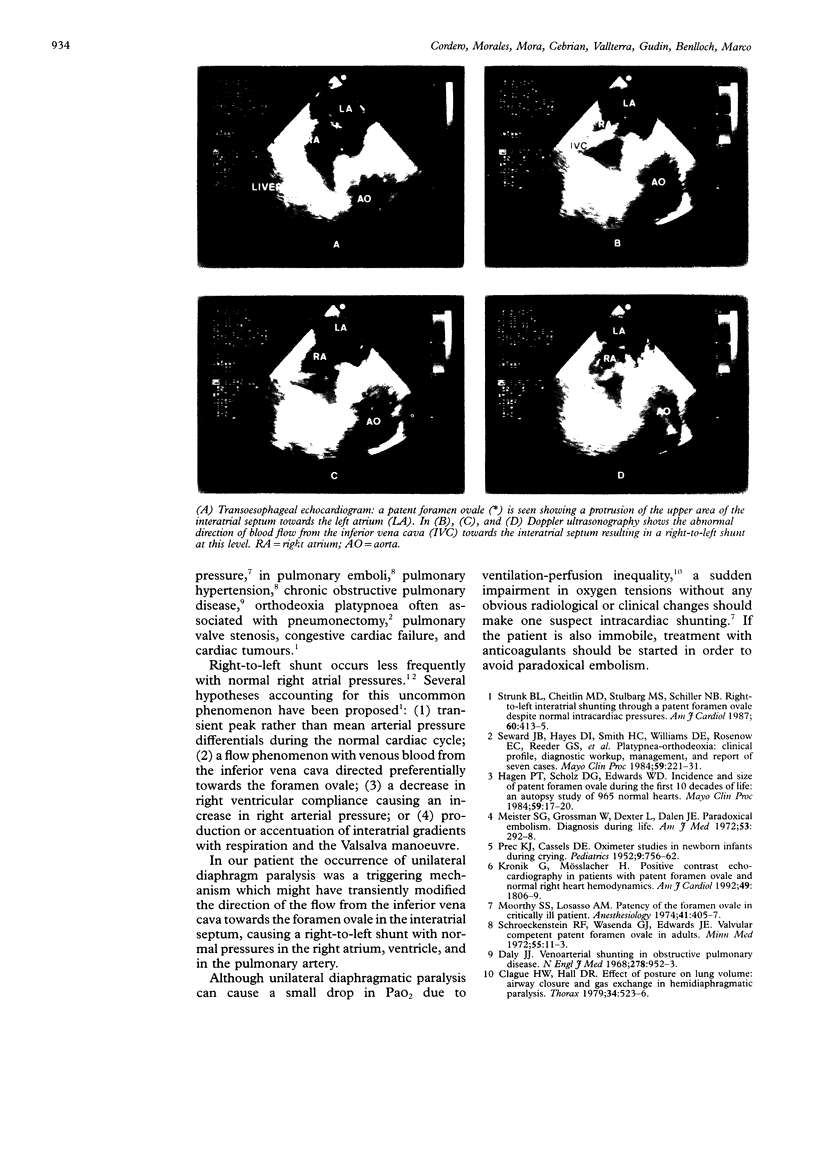Abstract
A 57 year old patient presented with unilateral diaphragmatic paralysis and severe hypoxaemia secondary to transient right-to-left interatrial shunting through a patent foramen ovale. The final diagnosis was made because of the initial detection of a shunt while the patient was breathing 100% oxygen.
Full text
PDF

Images in this article
Selected References
These references are in PubMed. This may not be the complete list of references from this article.
- Clague H. W., Hall D. R. Effect of posture on lung volume: airway closure and gas exchange in hemidiaphragmatic paralysis. Thorax. 1979 Aug;34(4):523–526. doi: 10.1136/thx.34.4.523. [DOI] [PMC free article] [PubMed] [Google Scholar]
- Daly J. J. Venoarterial shunting in obstructive pulmonary disease. N Engl J Med. 1968 Apr 25;278(17):952–953. doi: 10.1056/NEJM196804252781708. [DOI] [PubMed] [Google Scholar]
- Hagen P. T., Scholz D. G., Edwards W. D. Incidence and size of patent foramen ovale during the first 10 decades of life: an autopsy study of 965 normal hearts. Mayo Clin Proc. 1984 Jan;59(1):17–20. doi: 10.1016/s0025-6196(12)60336-x. [DOI] [PubMed] [Google Scholar]
- Kronik G., Mösslacher H. Positive contrast echocardiography in patients with patent foramen ovale and normal right heart hemodynamics. Am J Cardiol. 1982 May;49(7):1806–1809. doi: 10.1016/0002-9149(82)90263-6. [DOI] [PubMed] [Google Scholar]
- Meister S. G., Grossman W., Dexter L., Dalen J. E. Paradoxical embolism. Diagnosis during life. Am J Med. 1972 Sep;53(3):292–298. doi: 10.1016/0002-9343(72)90171-4. [DOI] [PubMed] [Google Scholar]
- Moorthy S. S., Losasso A. M. Patency of the foramen ovale in the critically ill patient. Anesthesiology. 1974 Oct;41(4):405–407. doi: 10.1097/00000542-197410000-00022. [DOI] [PubMed] [Google Scholar]
- PREC K. J., CASSELS D. E. Oximeter studies in newborn infants during crying. Pediatrics. 1952 Jun;9(6):756–763. [PubMed] [Google Scholar]
- Schroeckenstein R. F., Wasenda G. J., Edwards J. E. Valvular competent patent foramen ovale in adults. Minn Med. 1972 Jan;55(1):11–13. [PubMed] [Google Scholar]
- Seward J. B., Hayes D. L., Smith H. C., Williams D. E., Rosenow E. C., 3rd, Reeder G. S., Piehler J. M., Tajik A. J. Platypnea-orthodeoxia: clinical profile, diagnostic workup, management, and report of seven cases. Mayo Clin Proc. 1984 Apr;59(4):221–231. doi: 10.1016/s0025-6196(12)61253-1. [DOI] [PubMed] [Google Scholar]
- Strunk B. L., Cheitlin M. D., Stulbarg M. S., Schiller N. B. Right-to-left interatrial shunting through a patent foramen ovale despite normal intracardiac pressures. Am J Cardiol. 1987 Aug 1;60(4):413–415. doi: 10.1016/0002-9149(87)90271-2. [DOI] [PubMed] [Google Scholar]



